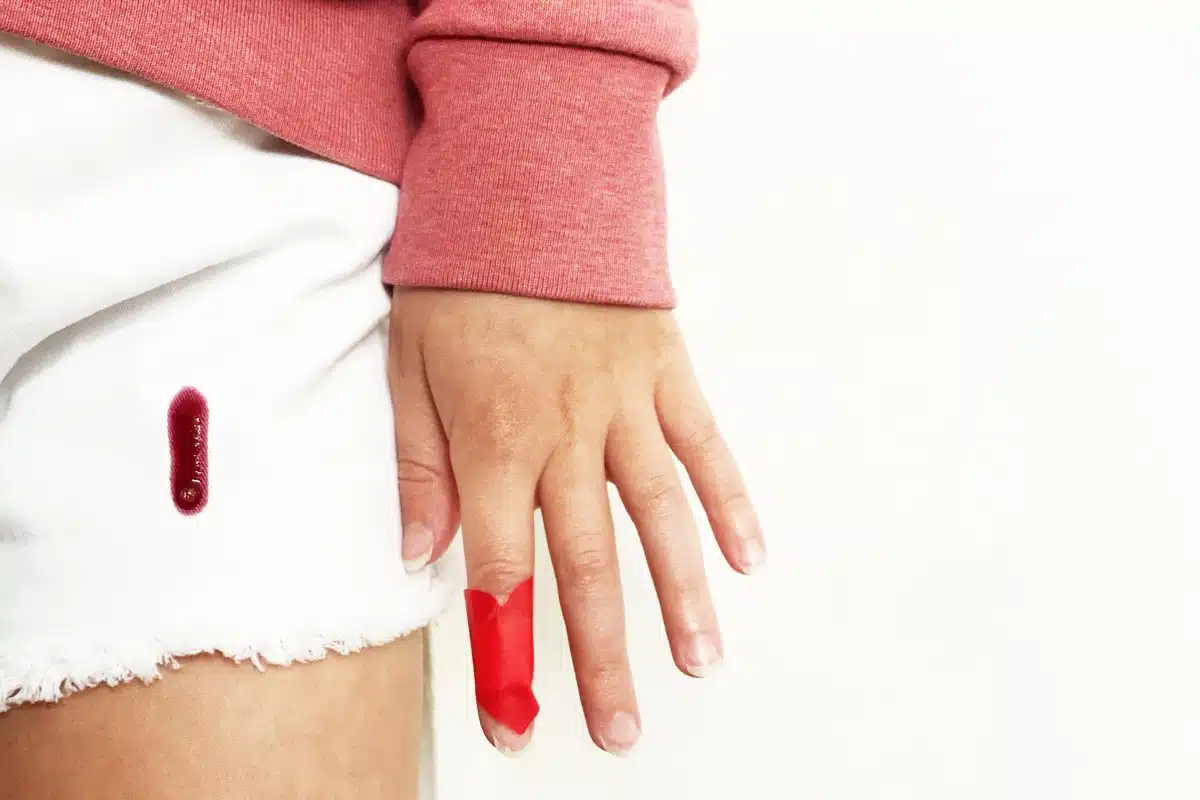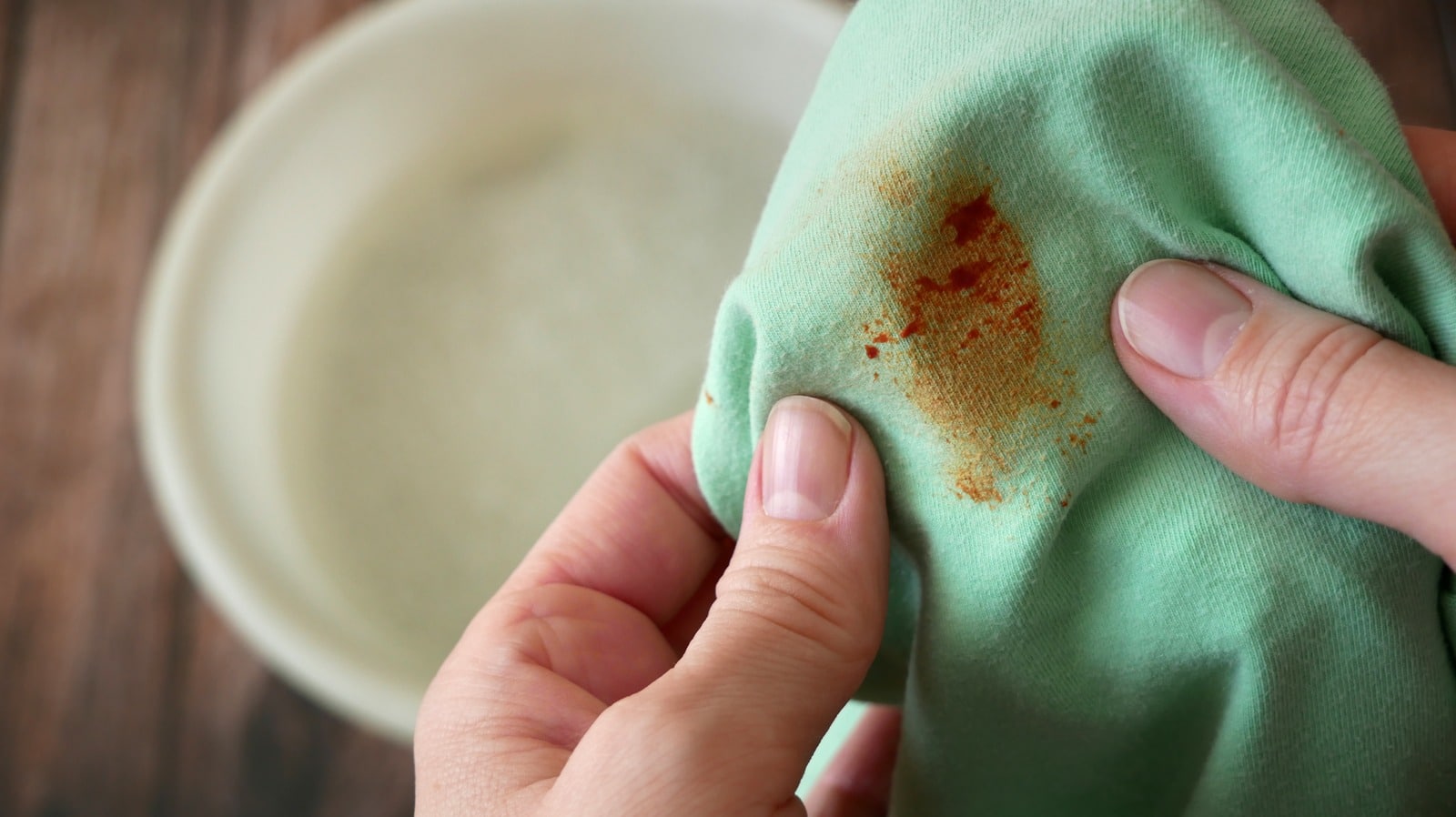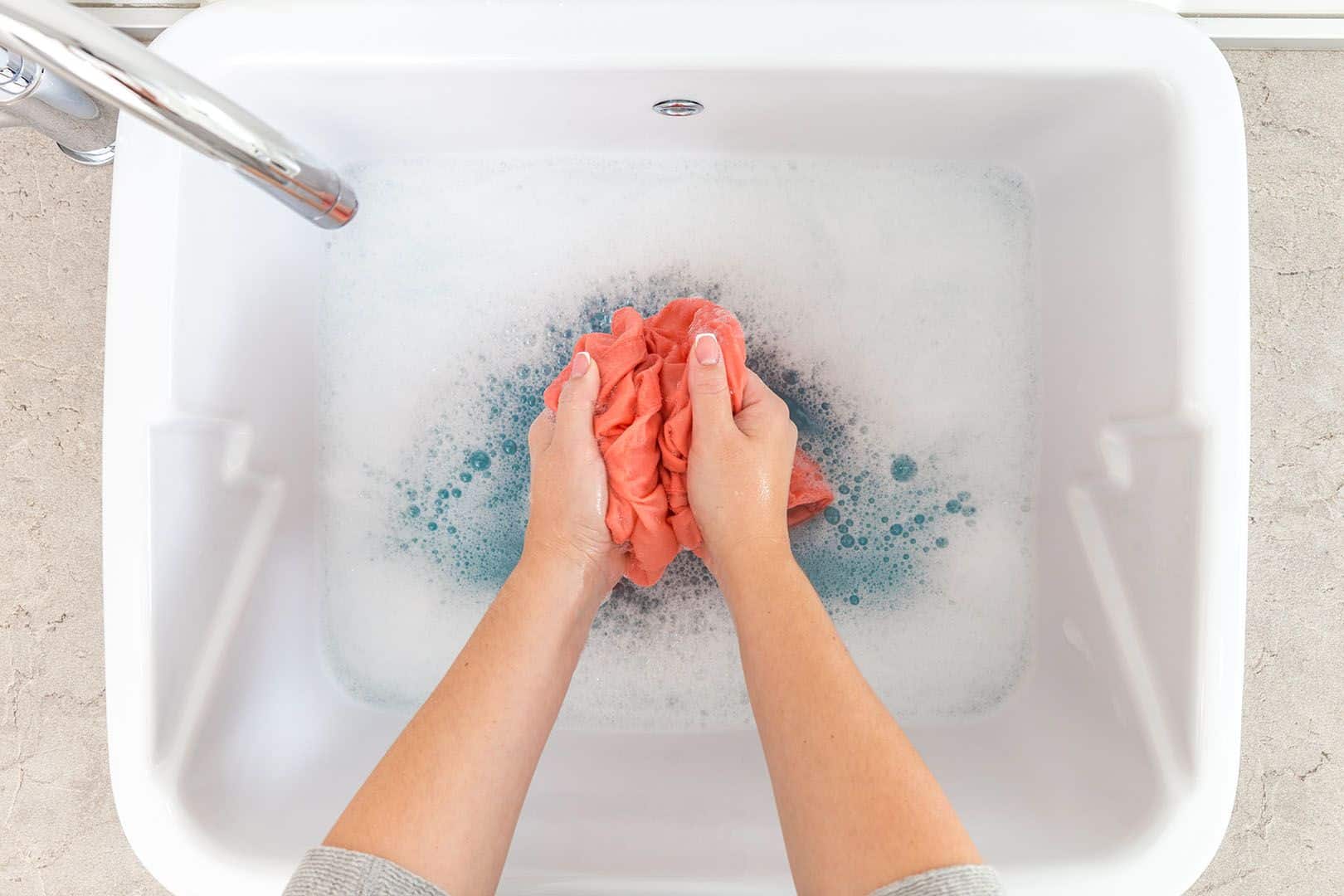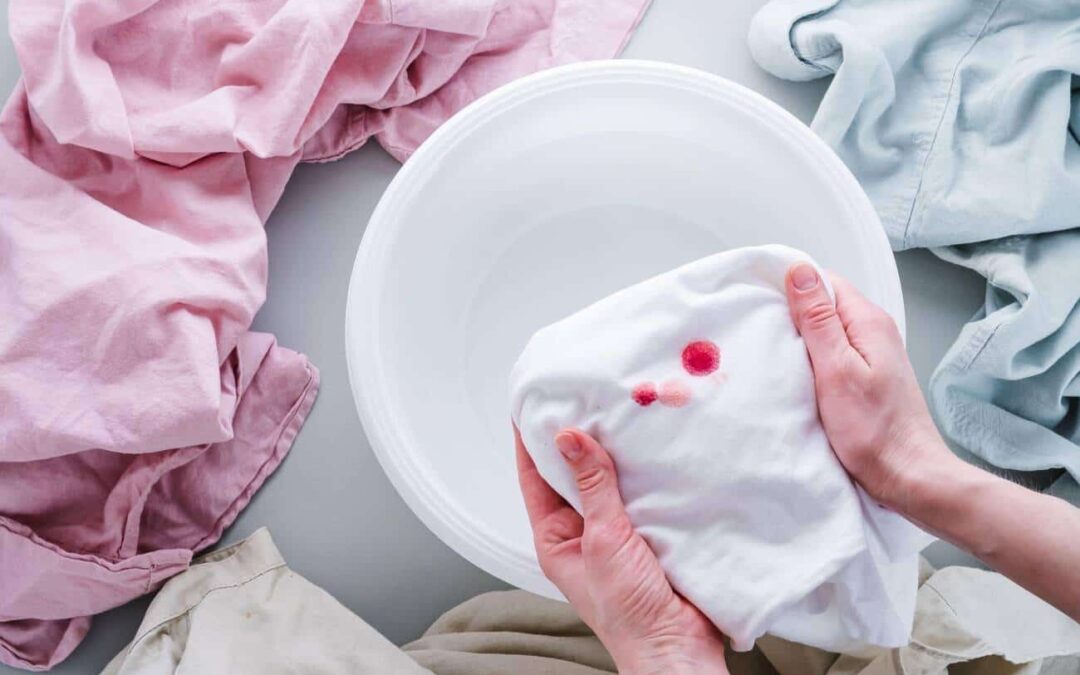Whether it’s a small scrape, a nosebleed, or an unfortunate mishap in the kitchen, conquering the battle taking blood out of clothes can be quite the task. But worry not! We’re here to arm you with the knowledge and techniques to triumph over these pesky stains and restore your garments to their former glory.
In this comprehensive guide, we’ll unveil a collection of tried-and-true methods to get blood out of clothes and eliminate those blood stains effectively. From ingenious household remedies to specialized stain removers, we’ve got all the secrets you need! And don’t forget, house cleaning is with My Cleaning Angel.
How to Get Blood Out of Clothes?
Let’s learn how to get blood out of clothes effectively:
Understanding Blood Stains
The first step in removing a blood stain is to understand what type it is. There are two distinct kinds of blood stains: fresh and dried. Stains from fresh blood are often simpler to remove than those from dried blood. The problem is that blood contains proteins that may bond to the fibers in fabric and leave behind unsightly stains. However, if you know what you’re doing, you may get blood stains out of your clothes completely without ruining your clothing.
Act Quickly: Treating Fresh Blood Stains
It’s important to respond quickly when you see new blood stains so that they don’t set in.
- Move quickly – Do not delay in cleaning up the spill.
- Starting with a clean cloth or paper towel, wipe the discoloration gently. Don’t massage the area, since this will just spread the blood and make the problem worse.
Soaking: The Crucial Step
To effectively eliminate blood stains, soaking the affected garment takes center stage. Follow these steps for optimal results:
- Prepare a soaking solution – Fill a basin or sink with cold water and add a small amount of mild detergent. This gentle combination will aid in breaking down the stain.
- Submerge the garment – Immerse the stained garment fully into the soaking solution. Ensure that the water covers the entire affected area, allowing the stain to be treated thoroughly.
- Patience is key – Allow the garment to soak for a minimum of 30 minutes. This timeframe gives the water and detergent ample window to penetrate the fabric, loosening the stain in the process.
- Check periodically – While the garment soaks, periodically check the stain’s progress. Gently agitate the fabric or lightly rub the stained area to gauge the stain’s loosening. Be careful to use any harsh movements as it can set the stain deeper or ruin your fabric.
- Additional time if needed – For particularly stubborn stains, consider extending the soaking duration. In some cases, immersing the fabric in the solution for a few hours or even overnight may be necessary to achieve optimal results.
Always Use Hot Water
6. Avoid hot water – Always remember that cold water is the preferred choice for soaking blood stains. Hot water can cause the protein in the blood to coagulate and set the stain, which will make the process of removal more challenging.
7. Delicate fabrics caution – For delicate or sensitive fabrics, exercise caution during the soaking process. Test a small, inconspicuous area first to ensure the fabric won’t be damaged or discolored by the detergent or soaking solution. Always use high-quality and suitable products.
8. Rinse thoroughly – After the soaking period, remove the garment from the solution and rinse it thoroughly with cold water. This step helps to remove any residual detergent and loosened stain particles.
9. Inspect and repeat if necessary – Assess the stain’s condition after rinsing. If traces of the blood stain persist, repeat the soaking process. If that doesn’t work either, you can also try some other stain removal techniques covered in this guide.
10. Air dry and evaluate – Finally, allow the garment to air dry completely before inspecting the stain. Avoid using heat sources like dryers, as heat can set any remaining stain that may become visible to you after the fabric has completely dried. Once dry, evaluate the results and determine if further treatment is required.

The Power of Cold Water
Using cold water effectively is a game-changer for recent blood stains. The clothing has to be completely rinsed after being soaked. You can follow the instructions and procedures given below if you want to see the best results!
- After the garment has been soaked, it should be rinsed under cold running water. The blood’s components are broken down by the cold water’s chill, making them simpler to drain.
- Make sure there’s enough water pressure to wash away any trace of blood. While rinsing, gently press the cloth together to help loosen the stain.
- Stop rinsing every so often to see how far the stain has come out. Keep rinsing until the water is no longer cloudy and the stain is gone. The odds of successful stain removal are greatly improved by thorough rinsing. Therefore, in this case, patience and perseverance are necessary.
- It’s best to use cold water throughout the whole rinsing procedure. Blood proteins may coagulate in hot water, making the stain difficult to remove or even permanent, causing your fabric irreversible damage.
- After the stained area has been rinsed, it should be examined thoroughly. Dry the item if the stain is no longer visible. If any stain remnants remain after soaking and rinsing, you may want to try another method of elimination. Do not let the fabric dry if you see even a hint of stain remaining, repeat the process or try another method while it’s still wet.

What Other Methods Can You Use to Get Blood Out of Clothes?
If you are worried that your stains are old and more stubborn and that they can’t be removed by the aforementioned tips and tricks, don’t fret. Of course, you have a lot of choice when it comes to removing bloodstains from your clothes, old or new!
For the oldest and worst ones, here is what you can do:
Hydrogen Peroxide: A Versatile Stain Remover
Hydrogen peroxide is a powerful stain remover that can be particularly effective on dried blood stains. Before using it, conduct a colorfastness test on an unnoticeable area of the fabric. Apply a small amount of hydrogen peroxide directly to the stain and let it sit for a few minutes. Blot the area with a clean cloth, and repeat the process if necessary until the stain completely fades.
Enzyme-based Stain Removers: Breaking down Proteins
Enzyme-based stain removers are specifically formulated to tackle protein-based stains like blood. These products contain enzymes that break down the proteins, making the stain easier to remove. Follow the instructions provided by the manufacturer and don’t forget pre-treat the stain before laundering.
Salt and Meat Tenderizer, that’s right! Natural Solutions for Blood Stains
For those seeking natural alternatives, salt, and meat tenderizer can be effective and quicker options. Create a paste by mixing salt or meat tenderizer with cold water. Apply the paste to the blood stain, gently rub it in, and allow it to sit for approximately 20 minutes. Rinse the area with cold water and launder the garment as usual.
Oxygen Bleach: Gentle yet Effective
Oxygen bleach is a safe and effective option for removing blood stains from white or colorfast fabrics. Follow the instructions on the product and soak the stained garment in a mixture of oxygen bleach and water. After soaking, launder the garment according to the care instructions.
Pre-treating with Ammonia: A Powerful DIY Option
Ammonia can be a potent ally in the battle against blood stains. Before using ammonia, make sure that there is proper ventilation and strictly adhere to safety precautions.
Mix one part ammonia with two parts water and apply the solution to the stain. Allow it to sit for a few minutes, then rinse with cold water and launder as usual.

Removing Dried Blood Stains: Persistence Pays Off
Dried blood stains can be more challenging to remove but not so much if you are persistent and patient. Begin by gently scraping off any dried blood using a dull knife or spoon. Follow the steps mentioned earlier, such as soaking, using hydrogen peroxide, or employing enzyme-based stain removers. Repeat the process as needed until the stain disappears.
Dealing with Stubborn Stains: Seeking Professional Help
If you’ve exhausted various methods without success, it may be time to seek professional assistance. Professional cleaners and cleaning companies like My Cleaning Angel possess the expertise and access to specialized cleaning agents that can effectively tackle stubborn blood stains. Make sure to inform them about the origin of the stain and any previous attempts at removal.
Conclusion
If you know what you’re doing, getting blood out of clothes isn’t quite as difficult as it may seem at first, because of the unsightly mess. Quick action, the right techniques, some tricks, and only using excellent and high-quality stain removers can help you say goodbye to those pesky blood stains for good. Carefully following instructions, doing spot tests, and treating clothing gently should be standard practice regardless of whether you choose to DIY or expert help. Your clothing will look as good as new after following these steps, and you’ll be prepared for any future blood stains or even dried blood, regardless of how old or new it is!

FAQS
Can I use hot water to remove blood stains from my clothes?
It is generally recommended to use cold water when treating blood stains. When it comes to blood, hot water can actually cause coagulation and set the stain further into the fabric, making it more difficult to remove.
Are enzyme-based stain removers safe to use on all types of fabrics?
Enzyme-based stain removers are generally safe for most fabrics. However, it’s always a good idea to check the care label on your garment and follow any specific instructions or warnings provided by the manufacturer.
Can I use hydrogen peroxide on colored fabrics to remove blood stains?
Hydrogen peroxide is best suited for white or colorfast fabrics. Before using it on colored fabrics, it’s crucial to perform a colorfastness test on a small, inconspicuous area to ensure it doesn’t cause any discoloration or damage.
Is it necessary to soak the entire garment or just the stained area?
It is recommended to soak the entire garment, especially if the blood stain has spread or if it’s difficult to pinpoint the exact location. Soaking the entire garment ensures that the stain is thoroughly treated and removed. It is also difficult to soak only the affected area, if not impossible.
What should I do if the blood stain remains after trying different methods?
If the stain persists after various attempts to remove it using different methods, or the same method repeatedly, it is strongly recommended to consult a professional dry cleaner. They have specialized knowledge and access to professional-grade stain removal techniques and products that can effectively tackle stubborn blood stains, saving your favorite piece of clothing.
Can I use ammonia on all types of fabrics?
Ammonia should be used with caution and only on fabrics that are compatible with it. It is generally safe for cotton and synthetic fabrics but can potentially damage delicate or sensitive materials. No matter which method or products you choose to use, it’s always best to perform a spot test and consult the care label on your garment before using ammonia.







